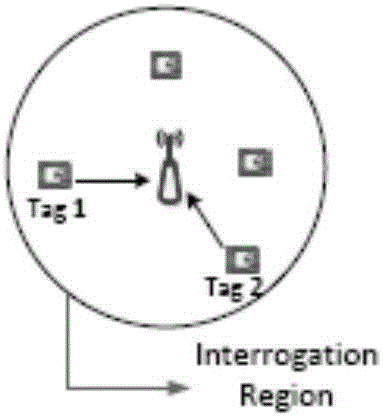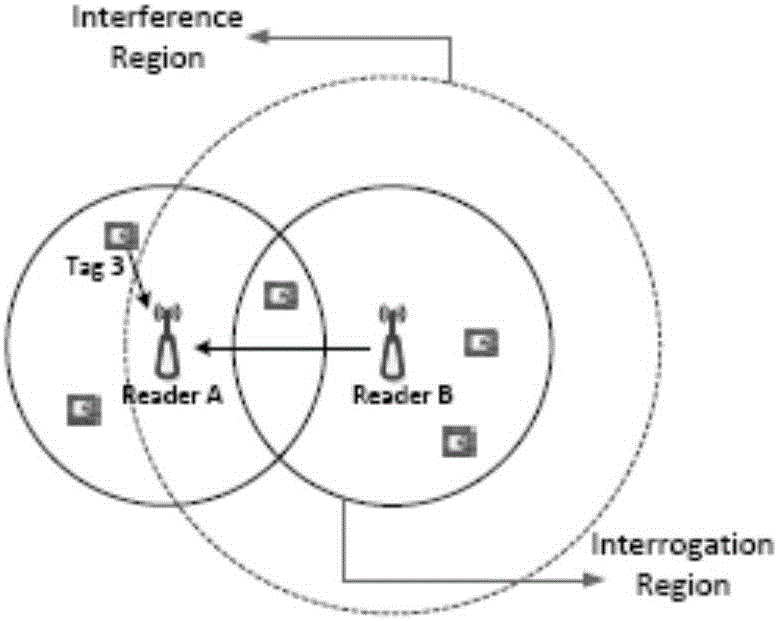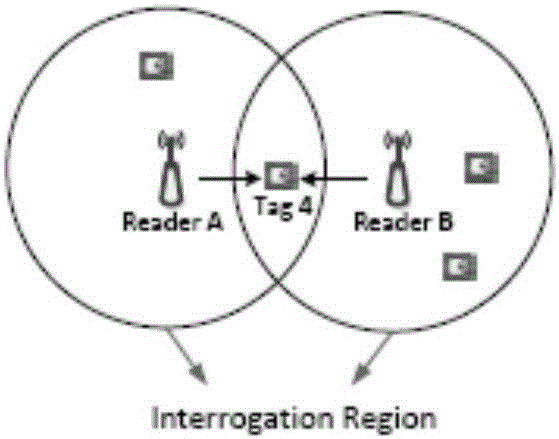Multi-reader RFID system quick tag identification method based on time slot division
A technology of tag identification and time slot division, applied in the direction of instruments, electromagnetic radiation induction, induction record carriers, etc., can solve the problem of impossible to solve the reader-tag conflict, etc., to improve throughput, eliminate RT conflicts, and reduce impact. Effect
- Summary
- Abstract
- Description
- Claims
- Application Information
AI Technical Summary
Problems solved by technology
Method used
Image
Examples
Embodiment Construction
[0043] The present invention observes that all readers need to perform the same behavior of collecting RN in each time slot: the reader broadcasts QueryRep in each time slot, and waits for the tag to send RN(s). Only when the reader successfully receives an RN can the reader ask the tag to send its ID by replying with an ACK including the received RN. Single slot has the longest time because it requires ID transmission. If the reader only collects RN(s) in a single slot and does not reply with ACKs (thus not causing ID transmission), then the single slot will have the same duration as the collision slot. That is, the reader sends a QueryRep command directly after receiving the RN(s) from the tag to start the next time slot. Also, if the duration of the empty slot is extended to be the same as the collision slot / single slot, then all readers will perform a synchronous operation, i.e. they will simultaneously send QueryRep commands and receive RNs from tags (or wait, but this ...
PUM
 Login to View More
Login to View More Abstract
Description
Claims
Application Information
 Login to View More
Login to View More - R&D
- Intellectual Property
- Life Sciences
- Materials
- Tech Scout
- Unparalleled Data Quality
- Higher Quality Content
- 60% Fewer Hallucinations
Browse by: Latest US Patents, China's latest patents, Technical Efficacy Thesaurus, Application Domain, Technology Topic, Popular Technical Reports.
© 2025 PatSnap. All rights reserved.Legal|Privacy policy|Modern Slavery Act Transparency Statement|Sitemap|About US| Contact US: help@patsnap.com



